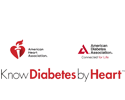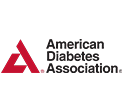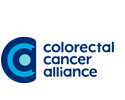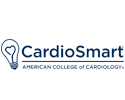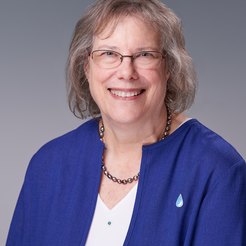Pulmonary Complications in Sjögren’s
Lung diseases are a potentially serious complication of Sjögren’s and often go unrecognized by health care providers. To help improve the early identification, evaluation and management of Sjögren’s-related pulmonary complications, the Sjögren’s Foundation led development of a new set of clinical practice guidelines for physicians, rheumatologists and pulmonologists.
Real World Health Care recently discussed the guidelines with two of their key architects: Katherine Morland Hammitt, MA, vice president of Medical and Scientific Affairs, Sjögren’s Foundation, and Nancy Carteron, MD, FACR, professor of Medicine and Health Sciences with dual appointments at the University of California – San Francisco and Berkeley. Dr. Carteron also serves as Rheumatology chair of the Sjögren’s Foundation’s Clinical Practice Guidelines Program, Berkeley Sjogren’s Clinic team member and as a board member of the HealthWell Foundation, sponsor of Real World Health Care.
An Under-Appreciated, Underlying Threat
Real World Health Care: Why are these guidelines significant? What critical need did they address?
Katherine Hammitt: Pulmonary manifestations are among the biggest complications that can co-occur with Sjögren’s. An estimated 16 percent of Sjögren’s patients demonstrate pulmonary complications, with increased mortality and lower quality of life – an estimate that may be a bit low, due to gaps in awareness and education among patients and providers: Rheumatologists who treat Sjögren’s patients may not know to look for these complications, and pulmonologists treating lung disease may not recognize signs of Sjögren’s in their patients.
Sjögren’s is a systemic, serious and prevalent disease. Because some physicians haven’t been attuned to symptoms that can co-occur between Sjögren’s and pulmonary disease, they may have come across to their patients as being dismissive. Now, providers have the tools they need to appropriately recognize, diagnose and treat these manifestations.
These latest guidelines join other clinical practice guidelines we’ve worked to develop, including guidelines for other systemic manifestations, oral management, and ocular management. We’re also developing guidelines on topics including the peripheral nervous system, central nervous system, lymphoma and other blood cancers, and vasculitis.
Nancy Carteron: Pulmonary involvement in Sjögren’s has been under-appreciated by clinicians, leading to delays in diagnosis and management. Also, diagnoses of asthma, GERD and post-nasal drip are made without consideration that Sjögren’s could be the underlying driver of the patient’s symptoms. These guidelines will improve early identification, evaluation and uniformity of care by primary care clinicians, rheumatologists, pulmonologists and other subspecialists. In addition, the guidelines identified key knowledge gaps and opportunities for research.
It’s important to note that from the start, development of the guidelines was conducted in partnership between subspecialists in pulmonology, rheumatology and oncology, along with patients and their family members. This multi-disciplinary approach resulted in guidelines that are highly relevant to patients’ clinical care.
RWHC: Why are people with Sjögren’s at risk for developing pulmonary disease? Is there anything they can do to help prevent it or lessen its effects?
NC: It’s not currently known why. In addition to the disease pathogenesis, which involves genetic risk, triggering events and gender risk, I suspect a key component is the epithelial cell – immune system interphase in the airways and lung air sacs (alveoli).
In terms of prevention and mitigation, people with Sjögren’s should avoid smoking, minimize exposure to air pollution and lessen the frequency of respiratory infections. Influenza virus and pneumococcal bacteria vaccines can help prevent respiratory infections.
Spreading the Word to the Sjögren’s Community
RWHC: How is the Sjögren’s Foundation promoting the new guidelines among health care providers?
KH: The guidelines were published in CHEST, a prestigious journal in the field of pulmonary medicine and research. One of the team’s members presented an oral abstract on the guidelines at the American Thoracic Society’s annual meeting. We’ve also published articles about the guidelines in Foundation newsletters, including our Conquering Sjögren’s newsletter for patients and our Sjögren’s Quarterly publication for the medical and scientific community. Additionally, we’ve created a 12-page handout summarizing key points and recommendations for management and treatment that we’ll continue to distribute broadly.
This fall, we were invited to hold a virtual symposium at the American College of Rheumatology annual conference, where a pulmonologist will highlight recommendations and Dr. Carteron will report on the importance of multiple specialists working together, followed by a live Q & A.
RWHC: What should people with Sjögren’s know about the guidelines? How can they use the guidelines to be part of decision-making with their care team?
KH: Patients play a critical role in their care. When they are part of the decision-making process, they are more likely to play a more active role and comply with treatments. We encourage patients to learn about potential pulmonary symptoms so they can watch out for them and report them to their doctor. Patients are encouraged to share the handout with their doctors, to help inform their care as well as the care of other Sjögren’s and pulmonary patients.
We also invite patients to learn more and become advocates for themselves and the entire Sjögren’s community by taking advantage of our support groups and Town Hall programs and spreading awareness through social media. The Foundation runs an Awareness Ambassadors program designed to help conquer the complexity of Sjögren’s as well.
World Sjögren’s Day
RWHC: July 23 is World Sjögren’s Day. How can people recognize and celebrate this important observance?
KH: World Sjögren’s Day honors the birthday of Dr. Henrik Sjögren, the Swedish ophthalmologist who first identified the disease in 1933 in a rheumatology patient who had dry eyes and a dry mouth.
In addition to honoring Dr. Sjögren, World Sjögren’s Day gives everyone touched by the disease a vehicle to reach out and educate those close to them about Sjögren’s. It is meant to put a face on the millions of people who live with this disease and is the ideal opportunity for people living with Sjögren’s to have their voice heard.
Leading up to World Sjögren’s Day, and especially on the day itself, we encourage patients to talk about Sjögren’s with the people in their life – to share their story and educate others. By doing so, they are helping spread the message that Sjögren’s is a serious and complex disease that deserves to be recognized.
The Future of Sjögren’s Management
RWHC: What is next on the radar in terms of Sjögren’s research and treatment?
NC: Beginning in 2015 with the stewardship of the Sjögren’s Foundation, the biopharma industry began to explore drug development for systemic disease in Sjögren’s. There are several mature clinical development programs which are poised to potentially lead to an FDA-approved medication for Sjögren’s. Similar to drug development in lupus, outcome measures and biomarkers have needed to be developed and continue to be refined. This remains a work in progress.
I believe the most important developments will result from the current revolution in understanding the basic pathways of the innate and adaptive immune system and their regulation in autoimmunity and cancer biology. Various checkpoints in immune pathways are key toggles between autoimmunity and cancer. The risk of one type of cancer, lymphoma, is significantly increased in Sjögren’s. Current biotechnology developments are poised to help the scientific and medical community understand the basic biology and thus, why this lymphoma link is so robust in Sjögren’s. Further understanding causes of the disease process will shed light on options for mitigation.
There is a lot of optimism for patients and for understanding the mechanisms of the disease at this point in time.










